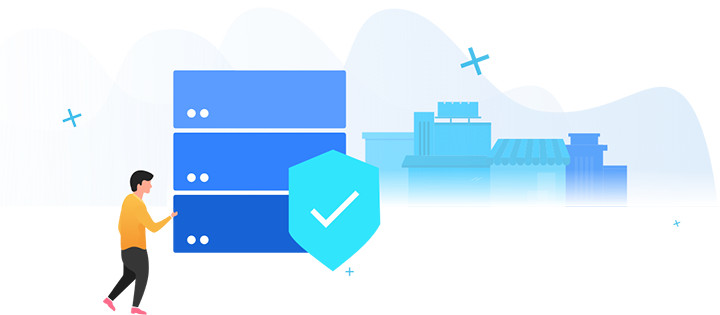Search Vacancies
Blog
What to Wear for an Online Interview: A Complete Guide for Candidates
- August 30, 2024

Online interviews have become the new norm in today’s job market. While they offer the convenience of connecting from the comfort of your home, they also bring a unique set of challenges—one of the most significant being what to wear. Dressing appropriately for an online interview can set the tone for professionalism and help you make a great first impression, even through the screen.
Here’s a comprehensive guide on what candidates should wear during an online interview, covering key considerations to ensure you look polished, professional, and confident.
1. Understand the Company Culture
Before you decide what to wear, it’s crucial to research the company’s dress code. Different companies have different expectations, and what works for a tech startup may not suit a corporate finance firm. Here are some tips to help you gauge the company culture:
- Check the Company’s Website and Social Media: Look at employee photos and videos to get an idea of how people dress at the company.
- Browse LinkedIn Profiles: Viewing LinkedIn profiles of current employees, especially those in similar roles, can provide insights into their typical attire.
- Ask Your Contact: If you’re unsure, it’s perfectly acceptable to ask the recruiter or HR contact about the company’s dress code.
Once you have a sense of the company culture, you can tailor your outfit to align with their expectations.
2. Opt for Professional Attire
When in doubt, it’s always better to be slightly overdressed than underdressed. Here are some recommendations based on different company environments:
-
Traditional Corporate Settings (Finance, Law, Consulting): Opt for business formal attire. For men, this could mean a suit and tie or a button-down shirt with a blazer. For women, a blouse with a blazer or a professional dress is appropriate. Neutral colors like navy, black, gray, or white are ideal.
-
Business Casual (Tech, Marketing, Creative Roles): You can be a bit more relaxed but still professional. Men can wear a button-down shirt or a polo without a tie, while women might choose a blouse or a simple dress. Blazers are optional but can add a professional touch.
-
Casual Environments (Startups, Creative Agencies): If you’re interviewing at a company with a more laid-back culture, a neat top or a smart-casual shirt will do. However, avoid overly casual items like graphic tees or hoodies.
3. Choose the Right Colors and Patterns
The colors and patterns you choose can affect how you’re perceived on camera. Here are some tips:
- Stick to Solid Colors: Solid, neutral colors like blue, white, gray, and soft pastels work best on camera. They convey a calm and professional image and are less distracting than bold patterns.
- Avoid Busy Patterns and Bright Colors: Stripes, plaids, and bright colors can be distracting and may not look great on screen. Stick to simple designs to keep the focus on you, not your outfit.
- Consider Your Background: Choose colors that contrast with your background. If your background is white or light-colored, opt for darker tones, and vice versa.
4. Pay Attention to Grooming and Accessories
Grooming and accessories play a significant role in completing your look. Here’s how to ensure you appear polished:
- Minimal Accessories: Keep accessories simple and minimal. Avoid large, flashy jewelry or accessories that could make noise and distract the interviewer.
- Grooming: Make sure your hair is neatly styled and your nails are clean. For men, ensure facial hair is well-groomed or shaved.
- Makeup: If you wear makeup, go for a natural look that enhances your features without being overpowering.
5. Dress from Head to Toe
Even though the camera will mostly capture you from the waist up, it’s essential to dress fully, including your lower half. Here’s why:
- Confidence: Dressing fully makes you feel more prepared and professional, which can boost your confidence during the interview.
- Avoid Mishaps: Dressing completely avoids embarrassing situations, like having to stand up unexpectedly and revealing your pajama bottoms!
6. Test Your Look on Camera
Before the interview, do a test run with your camera to see how your outfit looks on screen. This will help you spot any issues with colors, fit, or lighting.
- Check Lighting: Make sure your lighting is flattering and doesn’t cast harsh shadows. Natural light from a window works best, but a ring light or soft lamp can also help.
- Adjust Your Camera Angle: The camera should be at eye level, so adjust your laptop or webcam accordingly to avoid awkward angles.
7. Comfort is Key
While looking professional is essential, comfort is also important. Wearing something uncomfortable can be distracting and may affect your performance during the interview.
- Choose Breathable Fabrics: Opt for fabrics that are comfortable to sit in for extended periods, like cotton or blends that don’t wrinkle easily.
- Ensure a Good Fit: Make sure your outfit fits well without being too tight or loose. A well-fitting outfit can make you look more put-together and professional.
Final Thoughts
Dressing for an online interview is about striking the right balance between professionalism and comfort. By understanding the company culture, choosing the right colors, paying attention to grooming, and doing a quick on-camera test, you’ll set yourself up for success. Remember, your appearance is part of your personal brand, and dressing appropriately helps communicate that you are serious about the opportunity.
Good luck with your interview, and remember to smile—you’ve got this!
